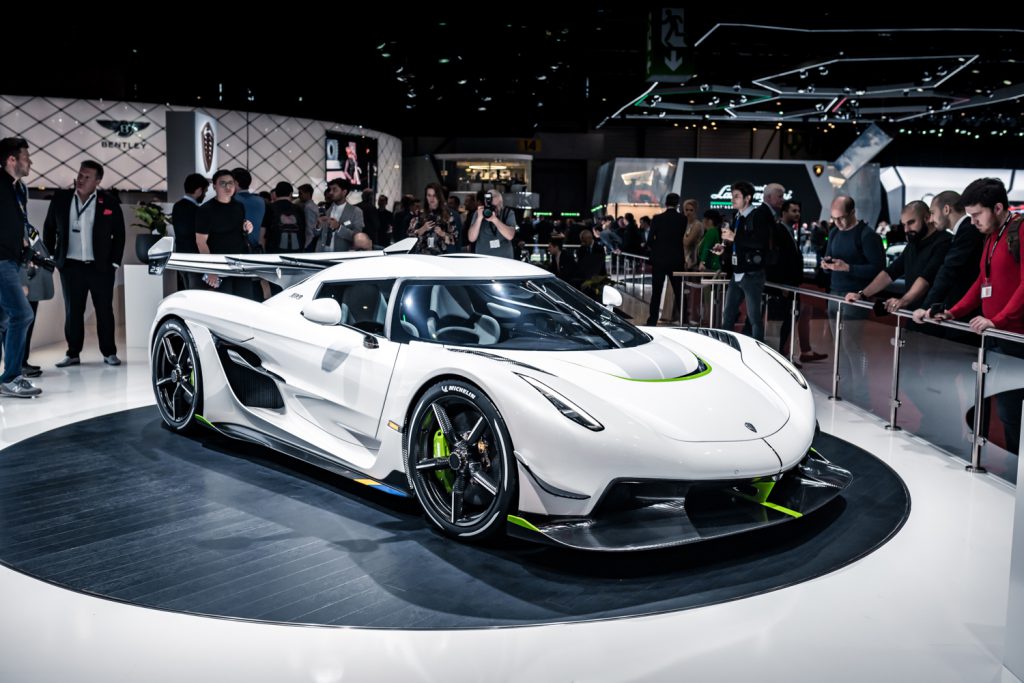The Koenigsegg Jesko burst onto the scene at this year's Geneva International Motor Show with up to 1,600 horsepower and some other incredible specs, but let's take a closer look into its amazing powerplant.
Jason Fenske is our host on this journey into the Jesko's 5.0-liter twin-turbo V-8 in an Engineering Explained video. First things first: the 1,600-hp rating comes with E85 in the tank. A sensor tells the engine what kind of fuel the engine is using, either 91-octane gasoline or E85. On 91 octane, Koenigsegg says the engine will make 1,280 hp. E85, however, allows the engine to advance its timing (no need to worry about knock issues), crank up the boost, and adjust the air-to-fuel ratio's flexibility.

Koenigsegg Jesko, 2019 New York International Auto Show
If an engine is going to make a lot of power, it will need a lot of fuel. Thus, the Jesko is the first production car with three fuel injectors per cylinder. The injector placement is also pretty clever. By injecting fuel earlier, there's more time for it to mix with the air around it. That's good for cold start and low rpm and low load situations.

Koenigsegg Jesko, photo by Keno Zache
Emissions had to be considered as well. For this, Koenigsegg changed the design of the intake ports to create a tumble flow that brings in higher-velocity air. Again, this helps for low rpm and load situations when the car needs to be more efficient.
Another interesting tweak Koenigsegg made to the engine was a switch from a cross-plane to a flat-plane crankshaft for higher revving (and lower weight). That allows this engine to spin to 8,500 rpm (from 8,250). The company deals with a flat-plane crank's inherent vibration issue by using active engine mounts.
The Jesko derives much of its power from a pair of large turbos, and we all know the larger the turbos the longer they take to spool up. The deal with this issue, the car has dedicated tanks, each pressurized to 290 psi of boost by an electric air compressor. Hit the throttle at lower rpm, and a shot of air comes from those tanks to provide immediate boost without turbo lag. This system weighs less than going with quad turbos. The tanks also inject air into the exhaust upon startup to warm up the catalytic converter, and that reduces emissions.
Finally, the Jesko has a pressure sensor to measure the pressure inside the cylinders, an industry first though Mazda isn't far behind. It measures the time between when the spark is ignited and maximum pressure is reached in the cylinder. The ECU can then adjust the system to fire the spark so max pressure is achieved when the piston reaches top dead center. That improves both power and efficiency.
For a more detailed explanation of the concepts described here, geek out on the world's most powerful homologated production engine by clicking on the video above.
—Senior Editor Kirk Bell contributed to this report.